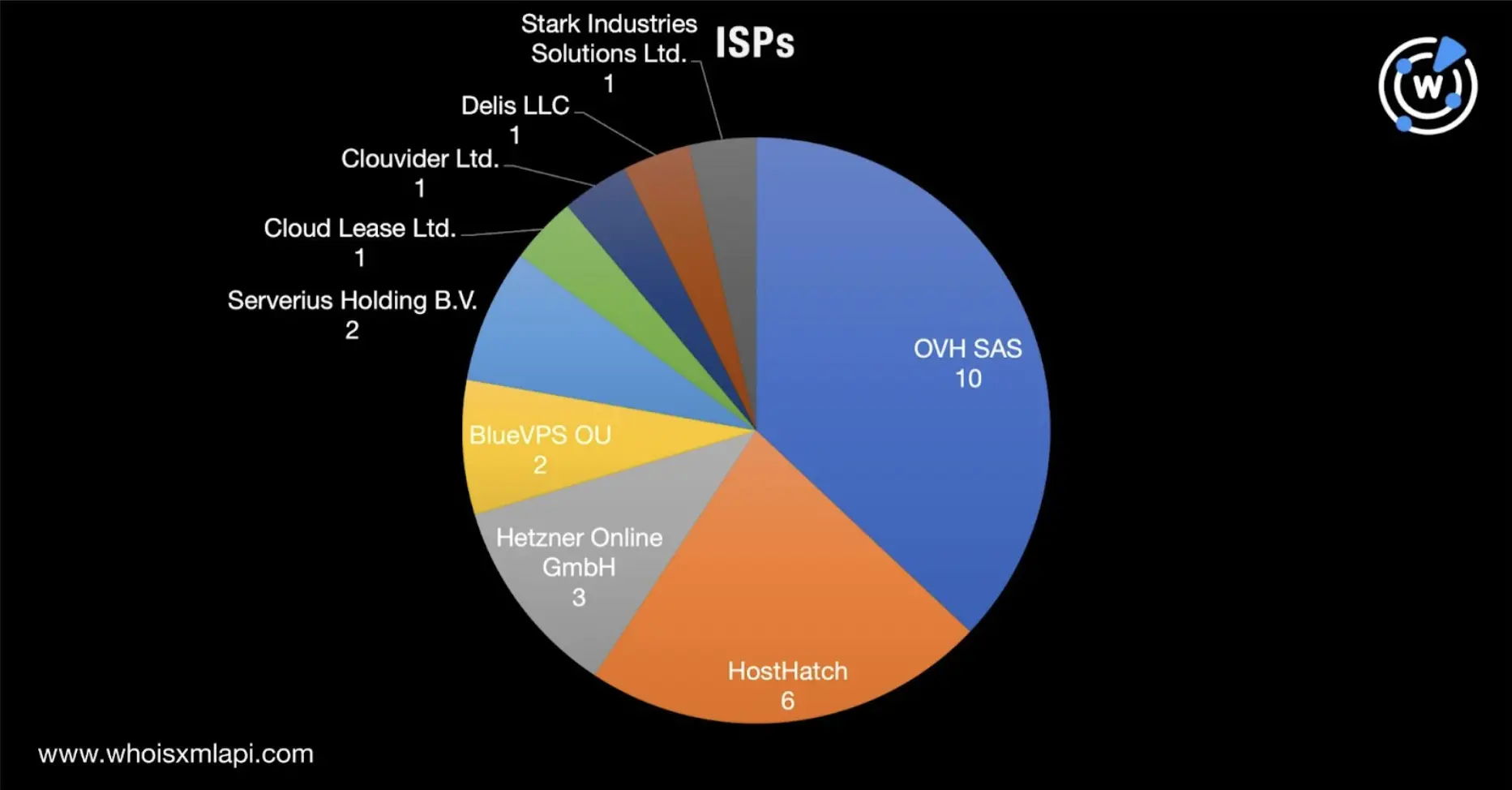


|
||
|
||
Cyber espionage group MuddyWater’s or Mercury’s first major campaign was seen as early as 2012. But as things always go in the cybersecurity realm, threat groups, especially those that gain infamy, don’t necessarily just come and go.
Such is MuddyWater’s case in that instead of disappearing, it resurfaces bigger and better each time. PhonyC2—the threat group’s latest addition to its framework—is proof of that. Deep Instinct recently shone the spotlight on PhonyC2’s underbelly by publishing an in-depth investigation on the matter.
WhoisXML API used the 27 IP addresses and 12 domains identified as PhonyC2 IoCs as jump-off points for a DNS deep dive, which led to the discovery of:
In addition, we analyzed the budding MuddyWater-DEV-1084 partnership that aimed to mask the former’s involvement in targeted attacks to shed more light on recent ransomware campaigns. We specifically expanded a list of 14 IoCs published by Microsoft and uncovered:
A sample of the additional artifacts obtained from our analysis is available for download from our website.
As mentioned above, Deep Instinct publicized 39 PhonyC2 IoCs, all part of the new MuddyWater C&C framework. We took a closer look at them using comprehensive DNS intelligence.
We subjected the IP addresses identified as IoCs to a bulk IP geolocation lookup and found that:

OVH SAS, meanwhile, topped the list of ISPs, accounting for 10 of the IoCs. HostHatch and Hetzner Online GmbH completed the top 3, accounting for six and three IP addresses, respectively.

We began our in-depth look at PhonyC2—the latest addition to the MuddyWater C&C framework—with Domains & Subdomains Discovery searches for strings found among the domains identified as IoCs, namely:
We uncovered 152 domains that started with the strings above. See how many we found for each in the table below.
| STRING | VOLUME |
|---|---|
| edc1. | 19 |
| pru2. | 10 |
| nno1. | 13 |
| nno3. | 9 |
| kwd1. | 11 |
| kwd2. | 7 |
| kwd3. | 14 |
| qjk1. | 11 |
| qjk2. | 13 |
| qjk3. | 14 |
| tes2. | 20 |
| pru1. | 11 |
While none of them were detected as malicious, some contained strings commonly found in web properties used or abused in nefarious campaigns, such as:
Next, we subjected the 27 IP addresses identified as IoCs to reverse IP lookups. Three of them turned out to be dedicated hosts. In total, they hosted three domains that weren’t part of the current IoC list—rare-upload[.]top, urbancritters[.]org[.]uk, and s2-store[.]com.
We searched for other domains containing the strings rare-upload, urbancritters, and s2-store. That allowed us to uncover 22 domains for two out of the three strings (urbancritters, and s2-store). Two of them turned out to be malicious based on a bulk malware check.
Both malicious domains were already unreachable at the time of writing. It was, however, interesting to note that one of them—refund-orderdc50kfcs2-store-apple[.]cf—alluded to Apple ownership. Its WHOIS record begged to differ, though. The malicious domain wasn’t publicly attributable to the tech giant.
Another recent MuddyWater-related development worthy of a closer look would be the group’s collaboration with another threat group known as “DEV-1084.”
In recent attacks believed to be spearheaded by MuddyWater, DEV-1084 took on the DarkBit persona to mask the former’s involvement. Microsoft researchers, however, brought the partnership to light and publicized four domains and 10 IP addresses as IoCs.
To find artifacts connected to the MuddyWater-DEV-1084 attacks, we subjected the domains identified as IoCs to DNS lookups that revealed that three of them—pairing[.]rport[.]io, vatacloud[.]com, and ehorus[.]com—resolved to four unique IP addresses. While one of the resolving IP addresses was already identified as an IoC, the other three—49[.]12[.]228[.]207, 172[.]67[.]181[.]250, and 104[.]21[.]80[.]130—weren’t.
Adding the three yet-unpublished IP hosts to those already identified as IoCs gave us a total of 13 IP addresses. Reverse IP lookups for them showed that three were dedicated hosts that were shared by 294 other domains, one of which—sdtvcs[.]ru—turned out to be a malware host.
A bulk WHOIS lookup result comparison, meanwhile, for the domains identified as IoCs and the 294 dedicated IP-connected domains revealed that:
Our MuddyWater investigation allowed us to identify 477 closely connected web properties that could be considered PhonyC2 and Mercury-DEV-1084 attack artifacts. It also led to the discovery of three malicious domains worth taking note of.
If you wish to perform a similar investigation or learn more about the products used in this research, please don’t hesitate to contact us.
Disclaimer: We take a cautionary stance toward threat detection and aim to provide relevant information to help protect against potential dangers. Consequently, it is possible that some entities identified as “threats” or “malicious” may eventually be deemed harmless upon further investigation or changes in context. We strongly recommend conducting supplementary investigations to corroborate the information provided herein.
Sponsored byWhoisXML API

Sponsored byVerisign

Sponsored byVerisign

Sponsored byRadix

Sponsored byDNIB.com

Sponsored byCSC

Sponsored byIPv4.Global
